Too Late to Say Goodbye Read online
Page 2
Buford, in Gwinnett County, is far more in tune with the twenty-first century, a bedroom community tied to a thriving metropolis. Young families who live there can enjoy relatively small-town warmth, or drive to Atlanta for more cosmopolitan pleasures.
The family who lived at 4515 Bogan Gates Drive fit comfortably into Buford’s demographics. Dr. Barton T. Corbin, forty, had recently moved his dental practice to Hamilton Mill—less than ten miles away. His wife, Jennifer “Jenn” Corbin, taught at a preschool in the Sugar Hill Methodist Church. Although Dr. Corbin’s efforts to build a new practice often kept him away from home, and Jenn was the parent who spent more time with their children, they both seemed to dote on their sons, Dalton, seven, and Dillon, five. They went to the boys’ ballgames and participated in school events at Harmony Elementary School, where Dalton was in second grade and Dillon in kindergarten.
Married almost nine years, the Corbins appeared to have all those things that most young couples long for: healthy children, a lovely home, admired professions, close family ties, and myriad friends.
Jenn Corbin, thirty-three, was tall and pretty, a big-boned blond who usually had a smile on her face, no matter what worries might lie behind it. Bart was also tall, taller than Jenn by two or three inches, but beyond that he was her opposite. His hair was almost black, his eyes even darker, his pale skin surprisingly dotted with freckles. He was a “gym rat” whose muscular physique showed the results of his predawn workouts. When Bart was dealing with a problem, however, or worrying over his finances, he lost weight rapidly and became angular and bony. Then his cheekbones protruded and his profile turned sharp as an ax, almost Lincolnesque.
Many of his female patients found Bart strikingly handsome; some others were a little put off by his intensity. But most of Bart Corbin’s patients seemed to like him. He often traded dental care with his personal friends for some service he needed, using an old-fashioned barter system.
To an outsider, the Corbins’ marriage appeared solid—her sunniness balancing his sometimes dark moods. In truth, tiny threadlike fissures had crept silently through the perceived foundation of their marriage, weakening its structure from the inside out until a single blow could send it crumbling.
Most people who knew the Corbins weren’t aware that Jenn had fled their home shortly after Thanksgiving of 2004, and that a divorce might be forthcoming. Those who did know were shaken that “Bart” and “Jenn” might be splitting up. To the world, they were a team, their very names strung together like one word when their friends talked about them. Bart-n-Jenn.
Jenn Corbin was responsible for that. She had struggled to maintain the façade that kept the foundering state of her marriage virtually invisible to the outside world. For at least eight years she continued to hope that she and Bart could somehow work out their problems and build a happy relationship. If they did accomplish that, there was no reason for anyone to know. If their union was irretrievably broken, people would know soon enough.
And know they would because, by the fall of 2004, Jenn had given up. Her parents, Narda and Max Barber, and her sisters, Heather and Rajel, knew that, although even they were reluctant to accept it. Jenn had tried to understand her husband and to make allowances for behavior she didn’t understand. She had forgiven Bart for betrayals most other women would not put up with. It was he who had laid down the ground rules in their marriage, and she had accepted them. She hadn’t gotten married with the idea that if it didn’t work out, they could always get divorced. She and her sisters were born to parents who had married only once—and who had just happily celebrated their fortieth anniversary.
Jenn Corbin was one of those people whom almost everybody liked, probably because she liked everybody. She thought of others before she took care of herself and she protected her small sons like a lioness would, doing everything she could to be sure they were serene and happy. She was the same way with the youngsters she taught in preschool at the church. She had a warm lap and sheltering arms when their tears came.
Jenn was a Barber before she became a Corbin, raised in a loving and a very close family. When she and Bart married, her family had opened up the circle and welcomed him in. Except for his occasional flashes of temper, Bart was a lot of fun and he happily participated in holiday celebrations, outings on the Corbins’ and Barbers’ adjoining houseboats, or on picnics and trips. They all shared the kind of extended family loyalty that isn’t seen very often.
Although Bart’s mother, Connie, and his brothers—Brad, Bart’s twin, and Bobby—didn’t spend much time with the Barbers, their connection was amiable enough, if a bit distant. Bart’s father, Gene Corbin, had remarried and wasn’t often in touch.
The Corbins’ marital difficulties didn’t stem from in-law problems. Rather, Bart’s new dental clinic was struggling, and a renewal of old issues had left their marriage on the precarious edge of oblivion. But with Christmas only three weeks away, Jenn was looking forward to finishing the decorations on a tall tree that sat in the Corbins’ formal dining room. Her little boys shouldn’t have to miss out on Santa Claus because of an adult situation that wasn’t their fault. She was halfway through with the tree, and she had stacked boxes nearby that held her treasured sentimental ornaments, new ones she had purchased during the year, and, most precious, Dalton’s and Dillon’s handmade art work they were so proud of. Jenn already had wrapped and hidden lots of presents for the boys.
IT WAS 7:30 on this Saturday morning, December 4, 2004, when Steve and Kelly Comeau, who lived across the street from the Corbins’ house, were startled to hear someone knocking at their front door. They were still in bed; Steve had been out late helping a friend hang pictures, and on the way home he had stopped to help a stranded driver change a flat tire. When he answered the door, he looked down to see Dalton Corbin, age seven. Dalton’s face was red and his cheeks were streaked with tears. He wore pajamas and appeared to be very upset.
“My mom isn’t breathing,” Dalton said. “My daddy shot my Mommy—I need you to call 911.”
Skeptical, Steve Comeau nevertheless called 911, while Kelly followed Dalton across the street to check on Jenn Corbin. She didn’t even think about danger to herself, because she doubted that Dalton could really have seen what he said he had. Jenn was most likely just sleeping heavily.
The Corbins’ overhead garage door was open. Kelly hurried beneath it, found that the door to the kitchen was unlocked, and headed down the hall toward the master bedroom, calling out Jenn’s name. There was no answer.
There was light in the bedroom, although Kelly couldn’t remember later if it was daylight or from a lamp. She could see Jenn lying diagonally across the bed. It was an odd position, and Kelly felt a little shiver of alarm. She told herself that Jenn was only sleeping, and she reached out to touch Jenn’s right shoulder. Kelly moved her fingers slightly, pressing harder, but there was no reassuring thrum of blood coursing there. And Jenn’s flesh was cold.
Jenn wasn’t breathing. Kelly saw a trickle of blood coming from her nose, and a few bright red stains on the bedclothes beneath Jenn’s head. She caught a glimpse of what looked like a pistol butt poking out from a coverlet next to her still body. Feeling as if she were in the midst of a nightmare, Kelly backed away from the bed, careful not to touch anything.
“She was way gone,” Kelly would later recall to DA’s Investigator Kevin Vincent. “Her body was frozen—ice cold. She was way, way gone. I didn’t check for a pulse. I knew she was gone a long time before.”
Kelly Comeau felt a ringing in her ears, and her whole body prickled with the shock that washed over her as she tried to deny to herself what she saw. Jenn Corbin was only thirty-three years old. She was healthy and vibrant and there was no reason at all for her to have a handgun in her bed. A thought swept through Kelly’s mind: not at Christmastime!
It seemed to her that she had been in Jenn’s bedroom—the room Jenn had decorated so beautifully—for a very long time, but it had actually been only moments. Kelly w
anted to pull Jenn’s green nightgown up over the breast that was partially exposed, but she knew she shouldn’t touch anything.
There was nothing else she could do for Jenn. Her two little boys were Jennifer Corbin’s biggest concern—always—and she would never have wanted them to see her this way. But Dalton and Dillon had indeed seen their mother dead, and Kelly’s heart constricted at the thought. Would they ever forget it? No child should ever have to live with such memories.
KELLY TRIED TO USE the cordless phone Dalton Corbin took from the dining room table and handed to her. Its battery was dead and it didn’t work. By now Dillon had come out of his room, too. With the boys trailing her, Kelly ran to her house and called 911 herself.
All she could repeat to the radio operator was that there was a dead woman in the house across the street—her friend, Jennifer Corbin. The dispatcher at the Gwinnett County Police Department’s Communications Center told the Comeaus that patrol officers had already been dispatched and would be there momentarily. Officers Travis Wright and Michelle Johns were the first to arrive. An engine with EMTs and the paramedics’ rig from Gwinnett County Fire Company #14 followed close behind them.
Kelly Comeau told Michelle Johns and Travis Wright where the master bedroom was. They could hear a dog barking frantically inside. The patrol officers walked cautiously through the Corbins’ open garage door with their weapons drawn, calling into the house before they entered. No one answered.
Zippo, the Corbins’ dog, ran out, and Johns asked Kelly to lock him up in the backyard. The patrol officers were fully aware that this situation was one of the most dangerous any police officer can encounter. Although the 911 operator had done her best to calm down Kelly Comeau so she could determine what had happened and who might be in the house—possibly waiting there with a loaded gun—she wasn’t able to elicit many facts. There was no description of a suspect; no one knew his—or her—sex, race, size, or what clothes the shooter had worn.
Neither of the Comeaus knew who might be in the house across the street. Jenn’s SUV was parked outside, but Bart’s pickup truck and his yellow Mustang convertible were gone.
Only now did Kelly realize that she might have been in danger herself when she entered the Corbins’ house. She had been so concerned for Jenn and then so shaken by finding her body, she hadn’t even thought of it. But if Jenn’s killer was still inside, the first officers responding could be targets, too.
What had happened was too much to take in without facing each detail, each little shock, every ragged facet of tragedy one by one.
There was a strong likelihood that Jenn’s killer had disappeared into the night, hours before. Even so, Wright and Johns, their hearts beating erratically, continued their exploration of the two-story brick house. No police officer is ever blasé about walking into a strange building where he might be caught in the sights of a gun. The patrol officers extended both arms and pointed their handguns toward the shadows. They made a quick sweep of the rooms and the hallway to reassure themselves that no one was hiding there.
There was no sound at all beyond their own breathing.
When they were satisfied that the house was empty, they waved to the EMS team to follow them into the house. The patrolmen and medics entered the master bedroom, and found it just as Kelly Comeau had reported. The woman who lay across the king-sized bed had what appeared to be a single gunshot wound near her right ear. The butt of a handgun rested three or four inches from the palm of her right hand, although her fingertips were less than an inch away from it.
Oddly, the barrel of the revolver was hidden beneath the rose-patterned comforter. There was a pale blue and white flannel coverlet with a snowman pattern at the foot of the bed, and a cordless phone next to it.
The medics checked the woman for any sign of life, and found none at all.
Patrol Sergeant E. T. Edkin joined his officers, and he saw immediately that there was nothing more anyone could do for the blond woman. Edkin was a veteran officer, a weight lifter with massive biceps. He had worked in the Homicide Unit for years, and had been a frequent partner to Detective Marcus Head, who was now on his way from home after being called out by the 911 operator. In December 2004, Edkin had temporarily left Homicide after being promoted to sergeant. It was standard policy. He would go back to working murder cases soon, but as a supervisor of detectives there.
“It wasn’t my case,” he said later. “I called the dispatchers at the Com Center and asked that crime scene investigators and someone from the Medical Examiner’s Office be notified.”
At first look, it appeared that the dead woman had killed herself. Still, with his years of experience working homicides, Edkin could not help but question whether this was in fact a suicide. He didn’t comment on it, but went about setting up a perimeter around the Corbin’s house and yard to bar anyone unauthorized from entering.
Edkin had Michelle Johns stay in a spot where she could watch the home’s windows so that no one could exit or enter. Kelly Comeau approached her and asked if someone could get clothes for Dalton and Dillon—who were shivering in their pajamas. Johns was able to do that and still maintain her watch on the windows, and she went upstairs where she grabbed underwear, pants, shirts, shoes, socks, and jackets for Dalton and Dillon from what was obviously a children’s bedroom. She glanced into another bedroom on the second floor and saw clothes belonging to an adult male hanging neatly in the closet.
Then she handed the children’s clothes to Kelly so the little boys could change out of their pajamas.
Along with her partner, Michelle Johns started a precise log listing every person who entered the Corbins’ house—the time they walked in and the time they left. It began at one minute after 8 A.M., and would not end until 4:26 P.M. as the sun set.
The 911 operator contacted Forensic Investigator Ray H. Rawlins at the Gwinnett County Medical Examiner’s Office, who jotted down the sparse information that was available so far. Then Rawlins called Sergeant Edkin to assure him that the medical examiner would accept jurisdiction.
“I’m en route now,” Rawlins said, as he headed out from the ME’s office.
The Gwinnett County Police Department would be the chief investigating agency into Jenn Corbin’s death by gunshot, although District Attorney Danny Porter was also notified because he and his staff would work alongside the police detectives.
All sudden and/or unattended deaths are worked first as homicides, next as possible suicides, third as accidental, and only then as a natural occurrence. Nobody yet knew where the dead woman would fit, but they had to start at the top of the list.
At this point they did not yet have positive identification of the woman who lay on the bed. Kelly Comeau had been too horrified to take more than a cursory look before she ran back to her house with Dalton and Dillon. She had been sure it was Jenn, but they would have to get an official identification. Still, there was little doubt that she was, indeed, Jennifer Corbin.
Seven-year-old Dalton Corbin had been positive that it was his mother lying there without moving. But he was far too young to be listed as the identifying person.
By the time Rawlins arrived, Gwinnett County Police Department Colonel “Butch” Ayres, Detective Sergeant Vic Pesaresi, and Detective Marcus Head had already joined Edkin and the uniformed officers at the scene. Assistant District Attorney Tom Davis was on his way.
It was still early in the morning as the official vehicles lined the street in front of the Corbins’ house. They contrasted grimly with the Christmas lights that glowed in the dim winter light. Almost all the homes in the Bogan Gates subdivision had some kind of Christmas decoration, their front yards displaying Santa Clauses, reindeer, angels, and nativity scenes.
A few neighbors were gathering in small knots, many wearing bathrobes, and speaking with hushed voices as they watched the lawmen park and enter the Corbins’ house. All of the law enforcement officers and the paramedics looked grim, their jaws set as they moved slowly. If only the medics would
hurry in with a gurney, and then carry someone out to be rushed to the hospital in Lawrenceville, there might be some hope.
But none of them did.
CHAPTER TWO
DECEMBER 4, 2004
THERE WAS NO HURRY. When a victim is beyond saving, an investigation slows to a crawl. Detectives, CSI units, and medical examiner’s investigators hasten only to be sure that every possible scintilla of physical evidence is gathered up and then sealed carefully into plastic bags or brown paper sacks. Body fluids and blood are swabbed onto slides. All the corners of a death site are photographed or videotaped. Or both. In this case, it would be both.
One timeworn tool is a measuring tape, just as important as any modern-day advance in forensic science. By triangulating certain points at the scene with accurate measurements, the scene can be reestablished long after it has been dismantled. How far away from the deceased had the gun been when it was fired? How close together were blood drops or spray…or splashes? Sometimes even a swipe of blood located where it should not be is vital in an investigation. To a skilled forensic technician, the tape measure can be a powerful tool, revealing things a killer meant to hide forever.
In this jurisdiction, no thorough search of the Corbins’ home could begin until a search warrant was obtained. For now, Detective Marcus Head spoke quietly to the Corbins’ closest neighbors. Head was a sometimes somber man in his thirties, with dark—almost black—hair and an open face. He grew up as the son of a funeral director.

 Too Late to Say Goodbye: A True Story of Murder and Betrayal
Too Late to Say Goodbye: A True Story of Murder and Betrayal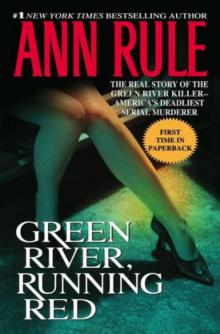 Green River, Running Red
Green River, Running Red Bitter Harvest
Bitter Harvest Dead by Sunset: Perfect Husband, Perfect Killer?
Dead by Sunset: Perfect Husband, Perfect Killer?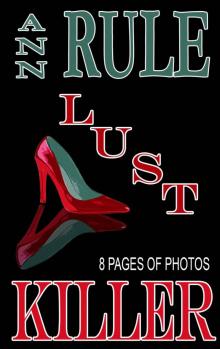 Lust Killer
Lust Killer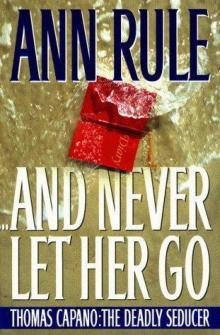 And Never Let Her Go: Thomas Capano: The Deadly Seducer
And Never Let Her Go: Thomas Capano: The Deadly Seducer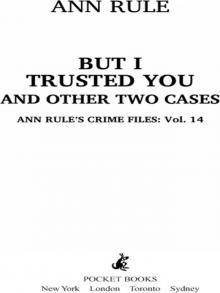 But I Trusted You and Other True Cases
But I Trusted You and Other True Cases Smoke, Mirrors, and Murder and Other True Cases
Smoke, Mirrors, and Murder and Other True Cases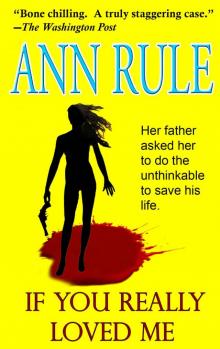 If You Really Loved Me
If You Really Loved Me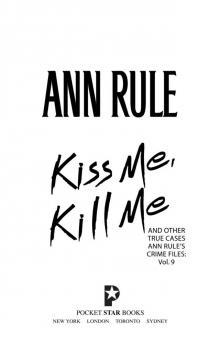 Kiss Me, Kill Me and Other True Cases
Kiss Me, Kill Me and Other True Cases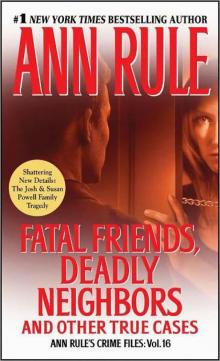 Fatal Friends, Deadly Neighbors and Other True Cases
Fatal Friends, Deadly Neighbors and Other True Cases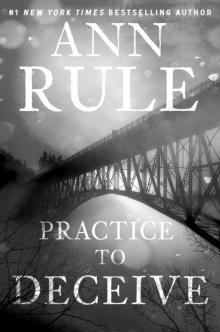 Practice to Deceive
Practice to Deceive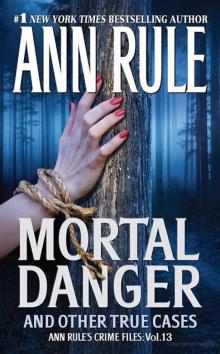 Mortal Danger and Other True Cases
Mortal Danger and Other True Cases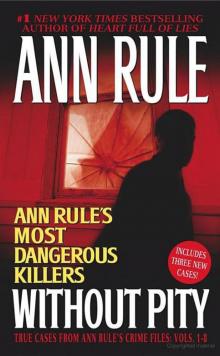 Without Pity: Ann Rule's Most Dangerous Killers
Without Pity: Ann Rule's Most Dangerous Killers Everything She Ever Wanted
Everything She Ever Wanted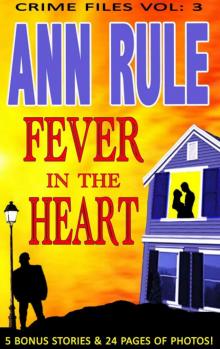 A Fever in the Heart and Other True Cases
A Fever in the Heart and Other True Cases In the Still of the Night
In the Still of the Night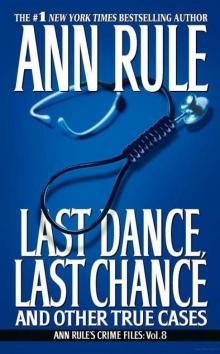 LAST DANCE, LAST CHANCE - and Other True Cases
LAST DANCE, LAST CHANCE - and Other True Cases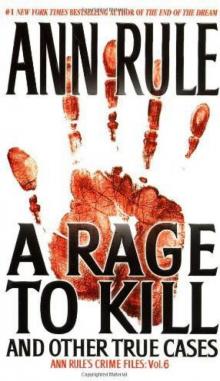 A Rage to Kill
A Rage to Kill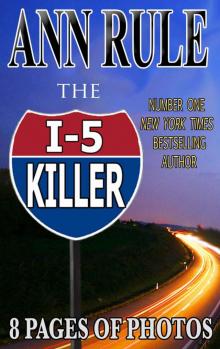 The I-5 Killer
The I-5 Killer The Stranger Beside Me
The Stranger Beside Me Everything She Ever Wanted: A True Story of Obsessive Love, Murder, and Betrayal
Everything She Ever Wanted: A True Story of Obsessive Love, Murder, and Betrayal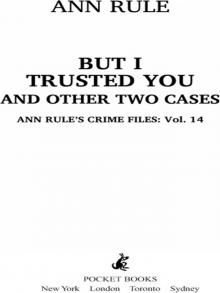 But I Trusted You
But I Trusted You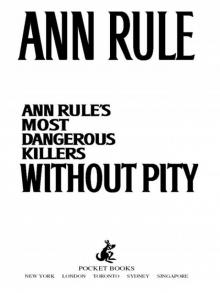 Without Pity
Without Pity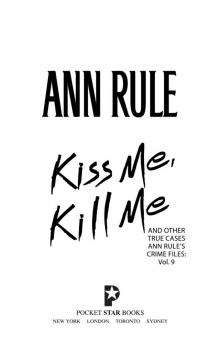 Kiss Me, Kill Me
Kiss Me, Kill Me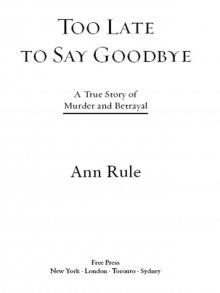 Too Late to Say Goodbye
Too Late to Say Goodbye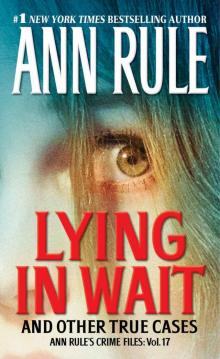 Lying in Wait
Lying in Wait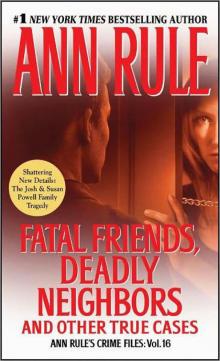 Fatal Friends, Deadly Neighbors
Fatal Friends, Deadly Neighbors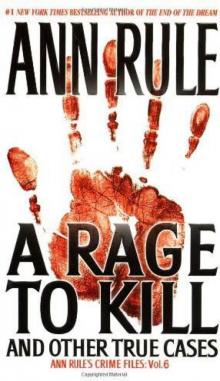 A Rage to Kill: And Other True Cases
A Rage to Kill: And Other True Cases And Never Let Her Go
And Never Let Her Go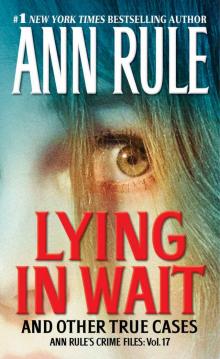 Lying in Wait Ann Rule's Crime Files Vol.17
Lying in Wait Ann Rule's Crime Files Vol.17 Blood Secrets: Chronicles of a Crime Scene Reconstructionist
Blood Secrets: Chronicles of a Crime Scene Reconstructionist No Regrets
No Regrets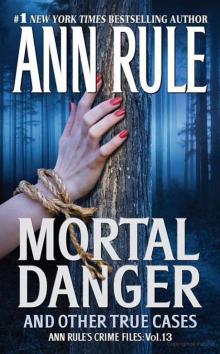 Mortal Danger
Mortal Danger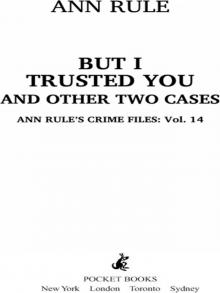 But I Trusted You: Ann Rule's Crime Files #14
But I Trusted You: Ann Rule's Crime Files #14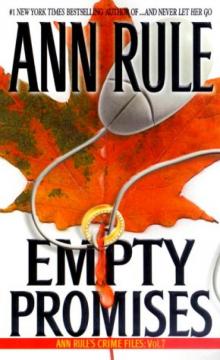 Empty Promises
Empty Promises Dead by Sunset
Dead by Sunset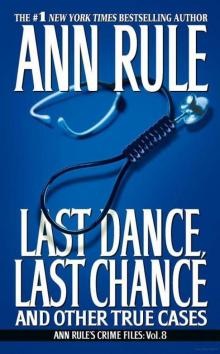 Last Dance, Last Chance
Last Dance, Last Chance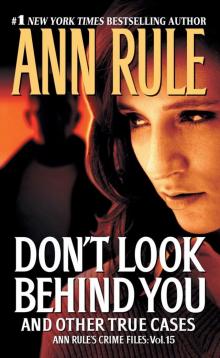 Don't Look Behind You
Don't Look Behind You